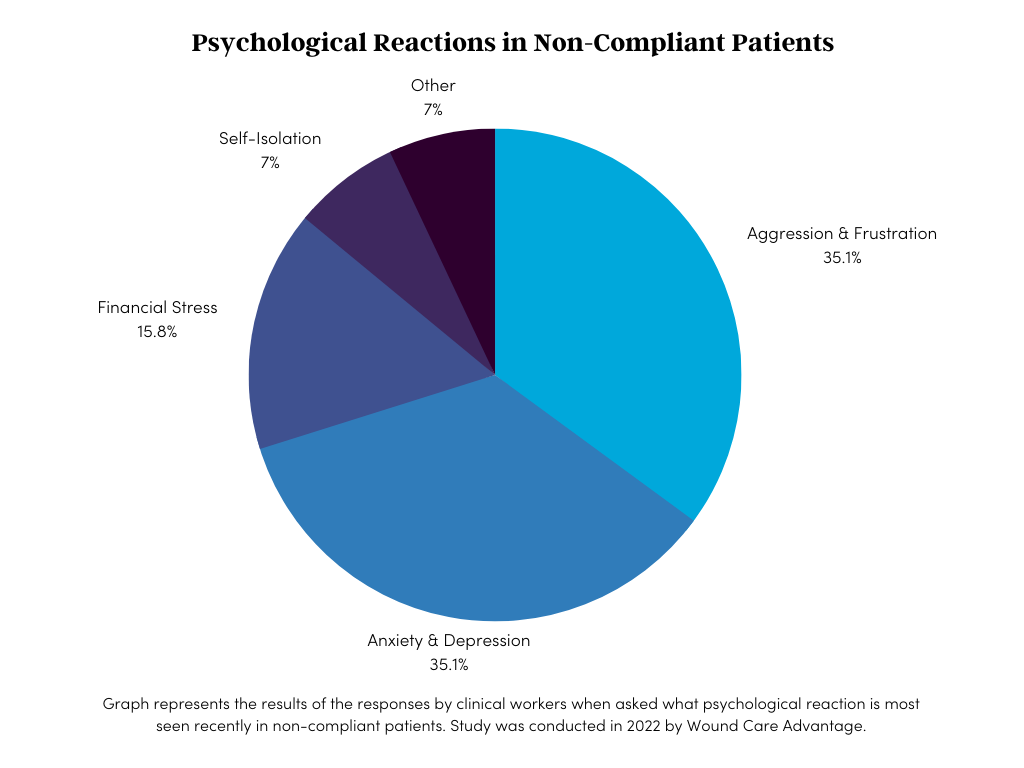

Aggressive outbursts from patients are rapidly plaguing the healthcare industry. Leaving clinical workers vulnerable to the wrath pressed upon them by emotionally charged patients. Where most clinicians are prepared to handle a patient that fails to comply with a treatment plan, they need to be just as prepared for noncompliance to transition into something unruly and potentially volatile.
In a recent study administered by Wound Care Advantage’s Learning & Development department, they found that 35% of the clinicians who participated stated that non-compliant patients are projecting outward anger and frustration, and another 35% said patients are expressing external anxiety and depressed behaviors.

Although there are many different psychological reactions that non-compliant patients can exhibit, Aggression and Anxiety are unpredictable in how turbulent the emotion can become. And both sets of behavioral patterns in patients are not becoming a serious problem in health care centers, they already are a severe problem. Looking at how to combat this, keeping those who work in a health care setting safe needs to be the primary focus.
While there is no easy solution as to how to handle patient outbursts during these heightened emotional times, the following simple steps are encouraged to all clinicians to promote safety and awareness in their clinic;
Along with the individual steps one can take to remain safe and aware, there are things centers can do as a team to create an environment of safety and healing. The first recommendation is to verify that all evacuation and emergency protocols are up to date and well drilled. This should include that all team members have a copy of the evacuation routes within the center, and a sheet of emergency protocols that list the corresponding announcement codes. Being prepared to handle any emergency, even the non-medical ones, is essential to the well-being of all who work in the health care center.
The second recommendation that a center can do as a group is to create a mental health wellness team. This team would be responsible for understanding the resources available for their teammates and how to provide them. They would also check in on their teammates regularly to ensure that they are receiving the support they need to remain healthy, both mentally and physically.
Following the above steps and suggestions can help all health care centers work towards a safe environment for all inside. However, each health care center should have an individualized safety and emergency protocol that is specific to their facility and is frequently drilled. Keeping health care workers safe and prepared for any type of patient outburst in this tension-fueled world is the primary goal.